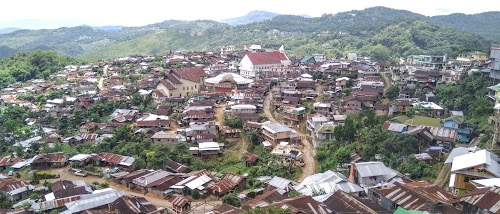
Ungma Village
Mokokchung, India
- Attend local cultural events (seasonal).
- Explore traditional Ao Naga houses.
- Hike to nearby viewpoints.
- Interact with local artisans.
- Visit the village Morung.
- Witness traditional weaving.
Known for:
Description:
Ungma Village, located near Mokokchung in Nagaland, India, offers a captivating glimpse into the rich Ao Naga culture and traditions. It's considered one of the oldest and largest Ao villages, showcasing traditional houses, morungs (community houses for young men), and intricately woven textiles. Visitors can immerse themselves in the local way of life, witness traditional dances and festivals (seasonal), and learn about the unique customs and social structures of the Ao Naga people. The village is surrounded by lush green hills, providing scenic views and opportunities for short hikes. Ungma is a living museum, offering an authentic and unforgettable cultural experience away from the hustle and bustle of modern life. It's a must-visit for anyone interested in exploring the diverse tribal heritage of Nagaland.
History:
Ungma boasts a long and significant history, believed to be one of the first Ao Naga villages established. Oral traditions and historical accounts suggest its importance as a center of Ao Naga culture and governance. Over centuries, Ungma played a crucial role in shaping Ao Naga society, influencing neighboring villages and preserving traditions. The village has witnessed changes brought about by British colonial influence and the subsequent integration into independent India. Despite these external factors, Ungma has managed to retain its unique cultural identity, preserving its traditional practices, social structures, and artistic heritage. Today, the village stands as a testament to the resilience and cultural richness of the Ao Naga people.